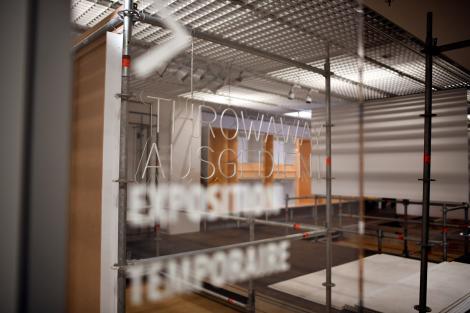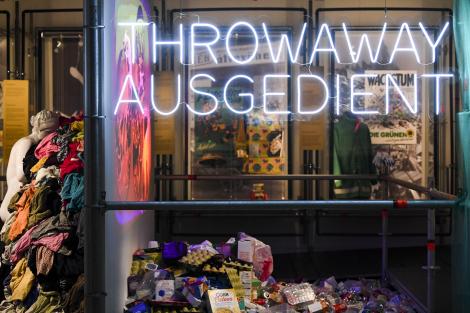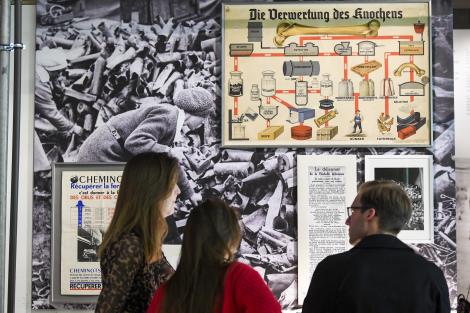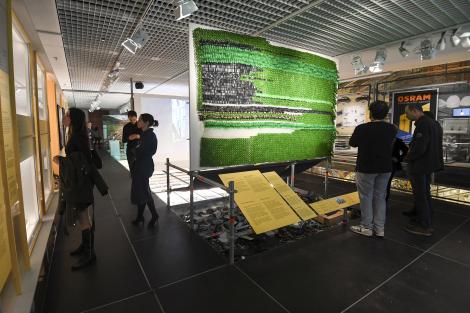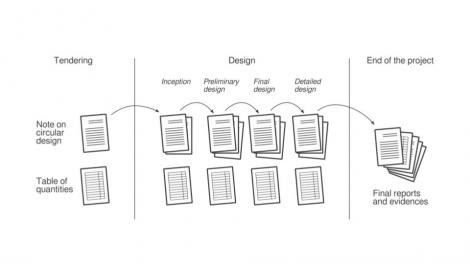Throwaway - House of European History
Between 2020 and 2021, Rotor assisted the House of European History (HEH) with their temporary exhibition project Throwaway. The history of a modern crisis.
Rotor's mission was twofold:
- to share with the curators the knowledge Rotor has accumulated over the years on the topic of waste.
- to help HEH integrate ambitious circularity requirements into the tender for the design and production of the exhibition.
For this second part, Rotor developed a relatively simple approach to assess the "circular" aspect of each offer. This approach draws on the measurement of the proportion of "fully circular", "semi-circular" and "linear" materials used for the production of the exhibition, and that at different stage of the project's development.
"Fully circular" refers to materials retaining their original use-value through their circulation in closed loops (for instance, rented items, salvaged elements...). "Semi-circular" refers to materials whose use-value tends to decline through their circulation in open loops (for instance, materials with recycled content). "Linear" refers to materials whose trajectory is the classic "produce-use-dispose" scheme (newly produced materials, materials that will be thrown away at the end of the exhibition).
The measurement is based on the mass of the materials. Although it is not without bias (since the mass only does not tell the whole story of a material's impacts), this metric allows for an objective approach, enables comparing different scenarios and is based on data that is easily available.
Both in and out flows were considered under this lens. Bidders were invited to source the materials from circular sources. They were also invited to think about the afterlife of the exhibition's components from the very inception phase. To anticipate this step, one can draw on specific approaches, such as investigating potential reuse channels from very early on, designing for proper dismantling, planing and budgeting the exhibition dismantling accordingly, etc.
To make it more tangible, let's consider a scenario in which the designers opt for new wooden beams and ensure their salvage for reuse at the end of the exhibition. This lot would count as "linear" for the inflow and as "fully circular" for the outflow. Now, if these beams were originally reclaimed on top of being reused at the end of the exhibition, they would be counted twice as "fully circular". Obviously, this second option would earn a much better score.
This scheme was designed to be relatively light to implement by the bidders and easy to use to assess the different offers at the awarding phase. It took the form of a simple table, that is also used to monitor the execution of the contract to the proper dismantling of the exhibition. More broadly, this scheme is thought of as a way to incentive providers to uptake of new habits in the way they design and build exhibitions, such as developing their own stocks of reusable materials, sourcing materials from the reuse economy, encouraging networks for the exchange and donation of materials, and so forth.
This approach aimed at raising and tackling a crucial question for the cultural industries: how to provide visitors and spectators with a memorable experience—without relying on the massive consumption of virgin resources? The exhibition designed by Ypunto Ending and Basurama (for the circular aspects) offers a convincing and appealing answer to this question!
Rotor project team
Lionel Devlieger, Michael Ghyoot, Gaspard Geerts
